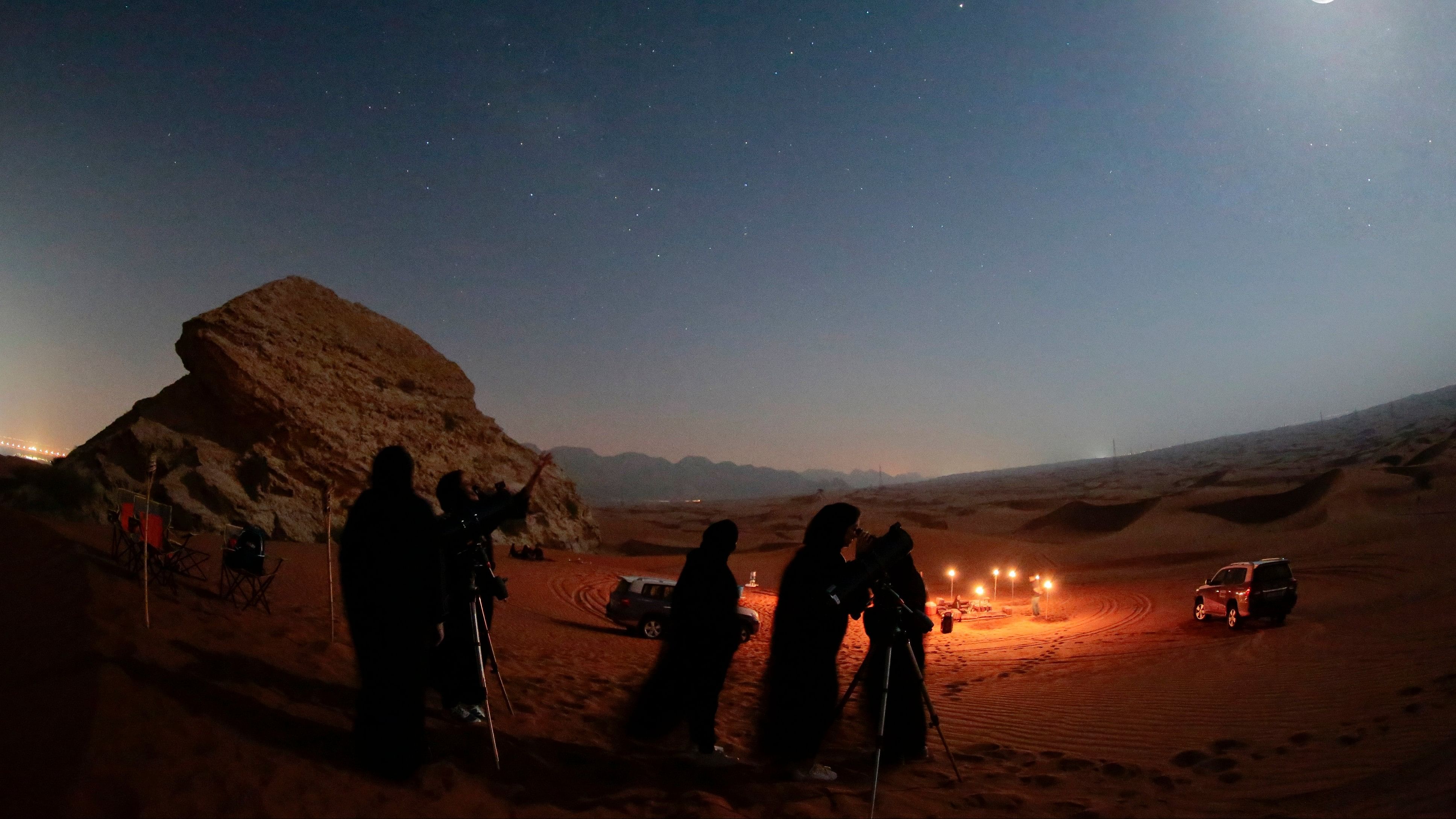
With minimal light pollution, reduced cloud cover and atmospheric turbulence, the night sky in Mleiha Desert makes for an ideal canvas for stargazing and studying the constellation.
Credit: Kiran Mehta
How do you spend an evening in the Emirate of Sharjah, United Arab Emirates? You could time travel at Buhais Geological Park. Set in the midst of the desert, this museum is a stunning piece of architecture. It consists of five interconnected buildings that are aptly shaped like ancient fossils, which were discovered on this very land. Step inside the magical museum and travel back to about 93 million years ago. Learn of the rich geological history of the region — the Arabian Gulf is filled with fabulous sea creatures, intimidating mountains and desert-scapes. Watch as the region transforms before your eyes, taking you back and forth in time, thanks to the fabulous displays.
Or you could spend the evening driving through the city while appreciating the skyline. Admire the traditional Islamic architecture captured in many mosques. Visit the Al Noor Mosque during the annual Sharjah Light Festival and you’ll be left mesmerised as the magical lights project bright colours and moving patterns on the gorgeous facade.
Or if you’re craving an adventure with dune-bashing, delicious food with flowing qahwa, and stargazing led by an astronomer-guide, then head out to discover Mleiha. A short drive from the city centre led me right into the Mleiha desert, where my expert driver-guide bashed through the many dunes in a sturdy four-wheel drive. Between revving to the top and sinking through the sands, we made a few photo-stops; the vastness of the desert, the geometry of the dunes, and the sun setting in the distance made for some enviable, instagrammable shots.
Our destination was a camp set up just for visitors in the midst of these soft sands. As I first set eyes on the campsite, it seemed like something out of the Arabian Nights. Comfortable sink-in-floor seating invited us, while a covered tent was also available with similar seating indoors. But I preferred the outdoor seating set beneath the night sky. A grill was set up nearby bearing a variety of meats smeared in aromatic spices. Out came the traditional carved-metal dallah (tea pot with the elongated spout), and miniature tea cups or finjals. The cups were small and I
asked for seconds and thirds! My guide explained that’s expected — the cups were deliberately made small so that people could sip slowly, enjoy the downtime, take in the strong flavours of the coffee, and most importantly keep the conversation flowing.
Nearby, yet another guide, who is also a trained astronomer, set up a telescope. Even without the telescope, I could see a clear sky. There were no man-made structures to block my view and no street lights to dim the beauty of the stars. In this, the desert is the perfect place to gaze into the vast emptiness above. Little wonder that astronomy is rooted in Arab and Muslim history. From days of yore, Arabs and Muslims have studied the skies. It was a much-required skill so as to find one’s way in a seemingly endless desert, or to know the correct direction and time of prayer. But it was in the Islamic Golden Age (approximately between 8 and 14th centuries CE) that astronomy grew in strength, under the patronage of the powerful Abbasid Empire. This part of history is reflected in the fact that even today two-thirds of all stars with names (instead of numerals) have names of Arab origin.
One of the brightest stars in the night sky, Aldebaran, has its name derived from the Arabic words, ‘Al dabaran’, which translates as, ‘the follower’. This is because this bright star follows closely on the heels of the Pleiades, or the star cluster popularly known as, ‘The Seven sisters’.
My astronomer-guide introduced me to various constellations and planets: There’s fiery Mars, which looks even hotter and fiercer through the sharp telescope. There’s Ursa Major, popularly called the Big Bear. But the highlight for me was to see a luminescent nebula. It appeared like a hazy cloud in pink and blue. A nebula is where stars are born, literally speaking. A nebula is an enormous cloud of dust and gas, but despite (or rather because of) its peculiar ingredients, it serves as a nursery for stars, while looking surreal. No pictures could do it justice and I gave up
and enjoyed the moment. I learned from a fellow tourist that one can dive into the rich world of Arab astronomy, and learn of the contributions of these pioneering scientists at the Sharjah Museum of Islamic Civilization.
The museum also features astrolabes and other interesting instruments used by astronomers. I didn’t make it to the museum on this trip, but I hope that another visit to Sharjah is written in the stars.